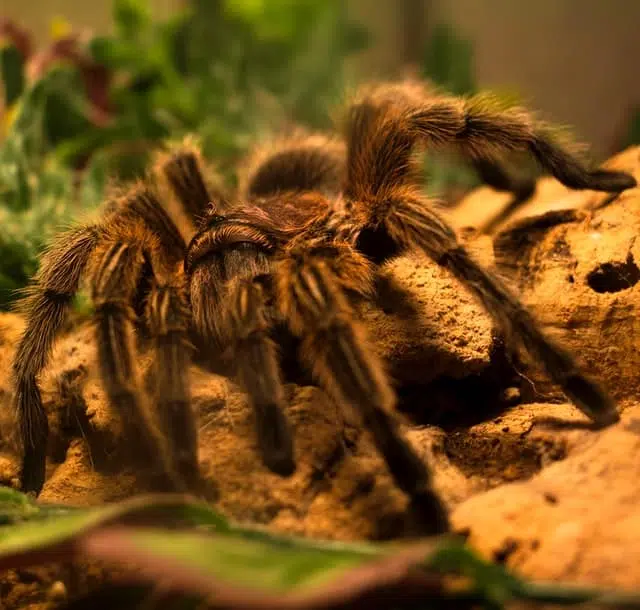Welcome to the top 10 Biggest Spiders in the World.
Spiders have been around for exactly 350 million years, and there’s an agreement among researchers that without insects holding bugs under wraps that devour crops, mankind would confront starvation.
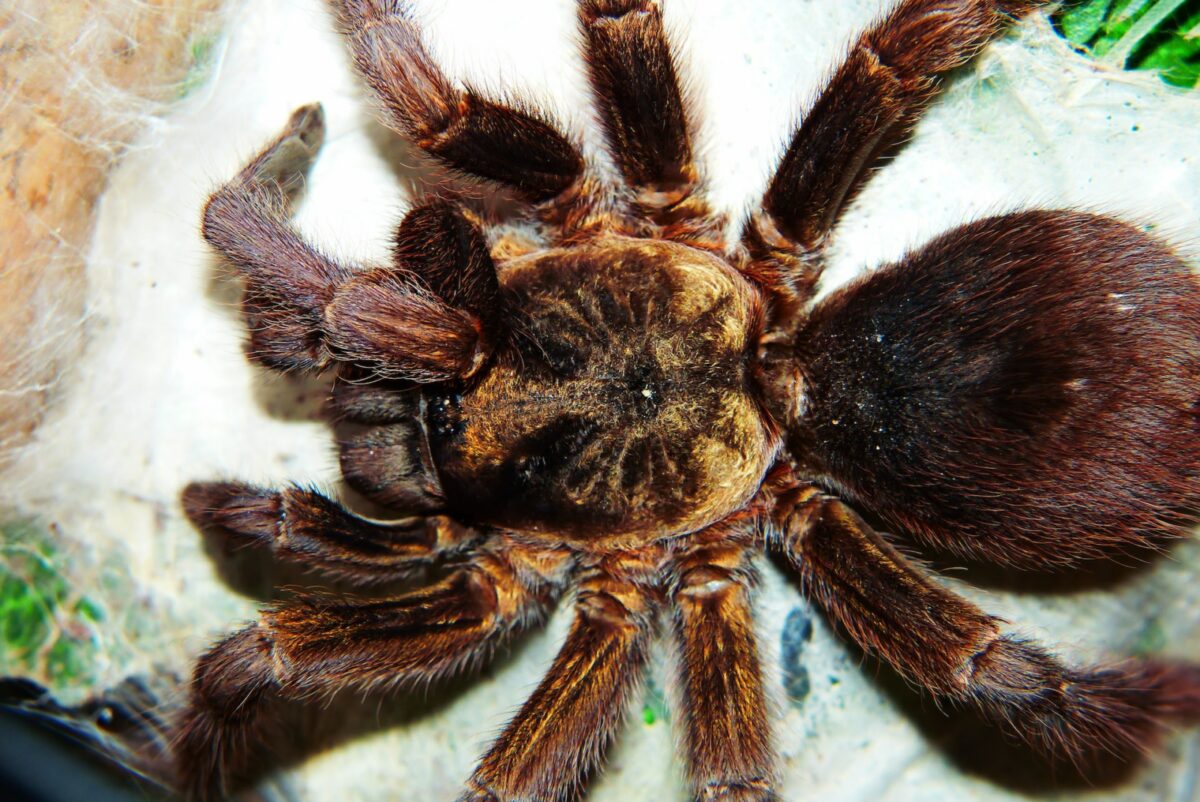
People benefit from spiders as fewer bugs imply fewer nibbles and less illness transmission.
Read on if you want to know more about the top 10 biggest spiders in the world.
#1 Giant Huntsman Spider
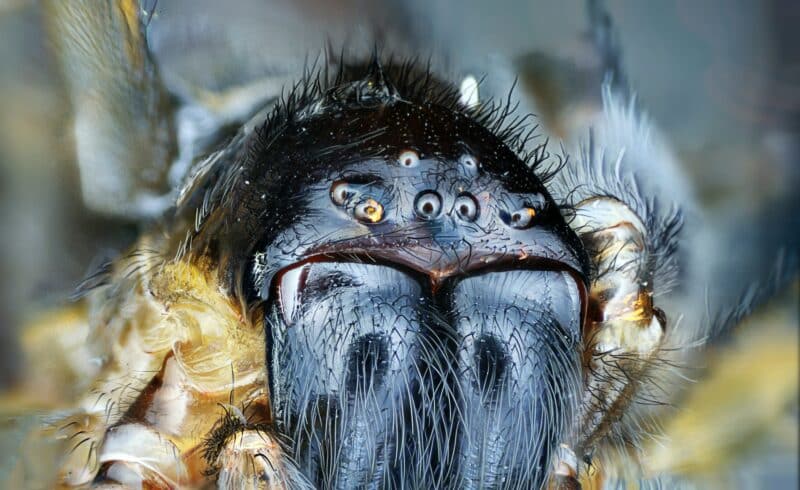
About
- Scientific name : Sparassidae
- Class: Arachnida
- Family: Sparassidae
- Order: Araneae
- Kingdom: Animalia
- Phylum: Arthropoda
Sparassidae, the family which incorporates the huntsman bugs, currently contains 1,383 unique species. The Giant huntsman, then again, is the family’s most significant part as far as leg length, huntsman bugs are the most significant bugs on the planet.
Crab or wood bugs are different names for this enhanced species, generally depicted as a “huntsman” given their speed and hunting style. They are frequently confused with monkey bugs yet are not connected.
Even though many individuals dread huntsman bugs as a result of their immense size, they’re very peaceful and resigned. The typical huntsman bug is about 1 inch long with a 5-inch leg span.
The huntsman insect has eight eyes. The eyes are in two lines of four, pointing front. The legs of huntsman bugs are curved so that they stretch forward like a crab, thus the epithet “crab” insect. Their tops are brown or dark. Numerous species have high-contrast undersides with ruddy mouthpart spots. Their legs have spines, yet their bodies are smooth and fluffy.
Specific Huntsman bug sub-species fluctuate by all accounts. For instance, the grouped huntsman is enormous and has striped legs. Neosparassus is bigger, brown, and hairier. Additionally, huge and bristly, with brown, white, and dark markings, the tropical huntsman. Huntsman insects have toxins that they use to catch and kill prey.
When a huntsman insect assaults and chomps a human or a pet, it isn’t generally clear what makes them do as such. Females are known to watch their egg sacs and are youthful enthusiastically when see dangers emerge. Another chance is that the bug was abused or annoyed here and there.
Once undermined, they might assault or chomp, contingent upon the seriousness of the circumstance. Huntsman bugs are known for their speed and dexterity and might stroll on walls and roofs. They likewise will generally exhibit a “stick” response, making it challenging to shake them off and more inclined to chomp if they are gotten.
Side effects of a huntsman nibble incorporate provincial torment and enlarging; however, they are seldom dangerous. Huntsman bugs are seldom adequately extreme to require clinical consideration.
Where can one find a Giant huntsman spider?
Most huntsman species are indigenous to Asia, and the enormous huntsman was discovered there. According to Science Alert, they are common in South America, Australia, and Africa.
#2 Goliath Bird Eater Tarantula
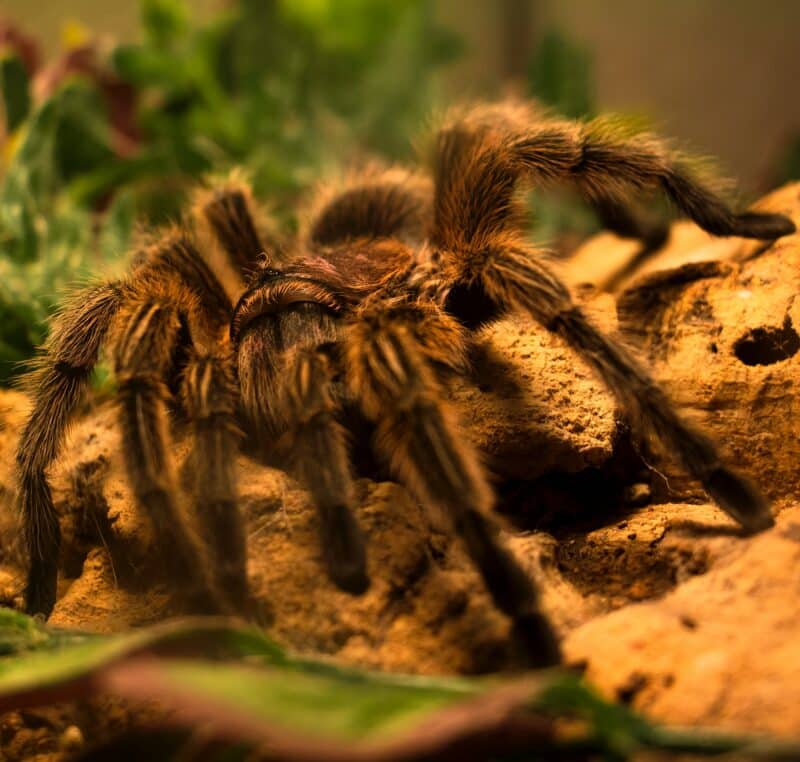
About
- Scientific name: Theraphosa blondi
- Order: Araneae
- Family: Theraphosidae
- Phylum: Arthropoda
- Kingdom: Animalia
The general tone is chestnut brown to dark, and unmistakable spines are on the third and fourth sets of legs. The tarantula’s teeth crease under the body, implying it should strike downwards to spear its prey. Tarantulas have four sets of legs, or eight legs complete.
Furthermore, they have four different extremities close to the mouth: chelicerae and pedipalps. The chelicerae contain teeth and toxins, while the pedipalps are utilized as sensors and paws; both guide in taking care of. The male likewise involves the pedipalps as a piece of generation.
If they need to guard themselves, they rub hairs together to make a murmuring clamor clearly to the point of being heard 15 feet away. They can likewise set their hair free and toss them at aggressors.
As a protection strategy, the goliath bird-gobbling bug may raise its rear legs to show its enormous teeth. After their development shed, guys create a “finger” on the underside of the prior arrangement of front legs to snare and lock the female’s teeth and consistently themselves while they mate.
After mating, guys bite the dust within a couple of months. The female priority as of late shed to recreate or procure sperm will be lost during the shed. When mated, the female makes a web where she lays 50 to 200 eggs that become treated as they drop off her body.
The female then, at that point, wraps the eggs into a ball, and, in contrast to different types of tarantula, the female conveys the egg sac with her. Egg sacs are practically the size of a tennis ball and contain around 70 spiderlings. To develop, they should go through a few sheds.
The male likewise involves the pedipalps as a piece of generation. If they need to guard themselves, they rub hairs together to make a murmuring clamor clearly to the point of being heard 15 feet away. They can likewise set their hair free and toss them at aggressors. The goliath bird-gobbling bug may likewise raise up on its rear legs to show its enormous teeth as a further protection strategy.
Where can one find Goliath Bird eater Tarantula?
The northern South American rainforests, particularly those in Venezuela, northern Brazil, Guyana, French Guiana, and Suriname, are home to the Goliath bird-eating tarantula.
#3 Hercules Baboon Spider
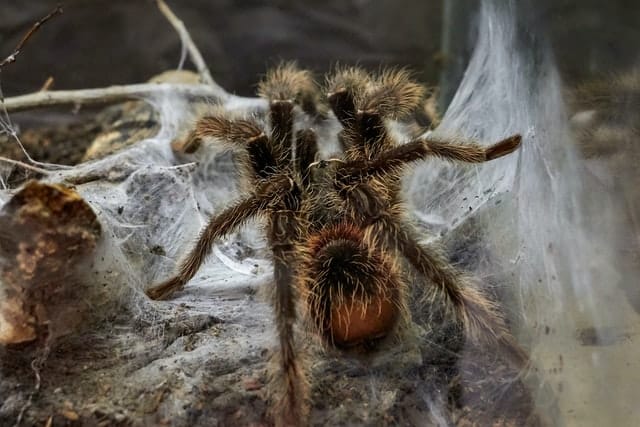
About
- Higher classification: Hysterocrates
- Scientific name: Hysterocrates hercules
- Rank: Species
Quite possibly of the terrifying specie in the Animalia realm, the Hercules monkey bug is a venomous tarantula tracked down in a few nations in the African mainland, including Nigeria. It is accepted that these tarantulas might be wiped out, as the last example was found a long time back.
This example presently lives at the Natural History Museum in London. These enormous estimated tarantulas mostly stay in tunnels and are tracked down in fields, dry scrublands, and savannah forests. These bugs make a deep safe house in desolate regions to shield themselves from the singing intensity.
Hysterocrates Hercules insects go after bugs, bugs, and little bugs. Very little data regarding their appearance is accessible because of the shortage of species. Yet, they are accepted to be bigger than camel bugs and Brazilian meandering insects, and some more.
These bugs are found in one or the other dark or earthy-colored variations, and they have hair all around the body. Their long legs resemble a primate’s fingers, their mid-region has spotted kaleidoscopic markings, and their carapace has sparkling groups. They, by and large, stretch their front legs to the side to uncover their teeth.
Read on for more info on the top 10 biggest spiders in the world
Where can one find Hercules Baboon Spider?
Nigeria, an African nation, is the only place where the Hysterocrates Hercules spider is found. Other tarantula species can typically be found in Africa and America; for example, king baboon spiders are native to Tanzania and Kenya, while Goliath bird-eating spiders are in South America.
#4 Brazilian Salmon Pink Bird Eater
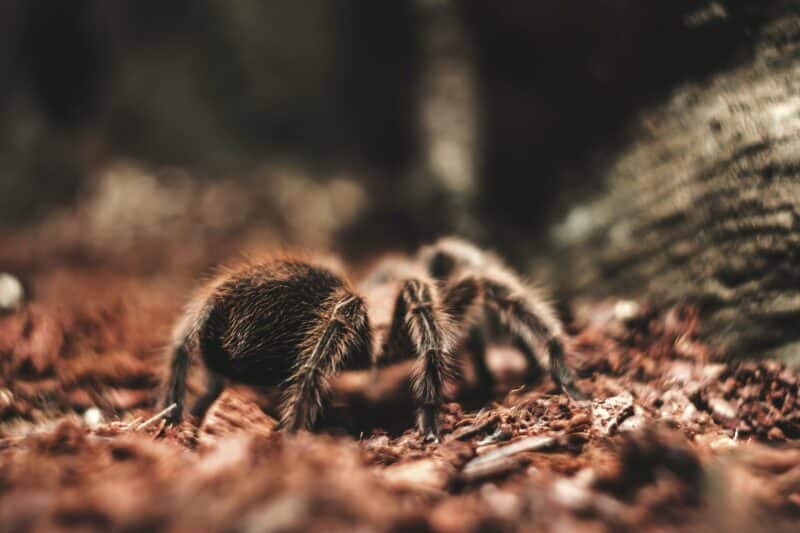
About
- Scientific name: Lasiodora parahybana
- Species: L. parahybana
- Class: Arachnida
- Family: Theraphosidae
- Genus: Lasiodora
Tarantula aficionados profoundly pursue these insects. Beneficially, they are effectively open thanks to their simplicity of reproducing and fast development. A Pink bird-eating tarantula spiderling can develop to 6 crawls in its most memorable year when taken care of well.
Pink Birdeater Tarantula bugs are not difficult to focus on in imprisonment. This is because they occupy the timberland floors, which experience up to 4-5-month dry periods yearly.
They are vital because they’ve advanced through nature’s hot and damp climatic circumstances. Being non-climbers and not-so-dynamic burrowers, the Pink bird-eating Tarantulas are bound to hang out in the open more than different species.
To this end, they will generally be in plain view more often than not in the pet exchange, offering an extraordinary enticement for possible purchasers. Other Tarantula species will generally stow away more often than not, possibly coming out when it’s dull.
Where can one find a Brazilian Salmon Pink Bird eater?
While some forest-dwelling tarantulas are arboreal (living in the trees), others are terrestrial (living on the ground). The Brazilian salmon pink birdeater lives on the ground. They often spend the day in self-made burrows or on the forest floor in the cover provided by the natural environment.
#5 Grammostola Anthracina
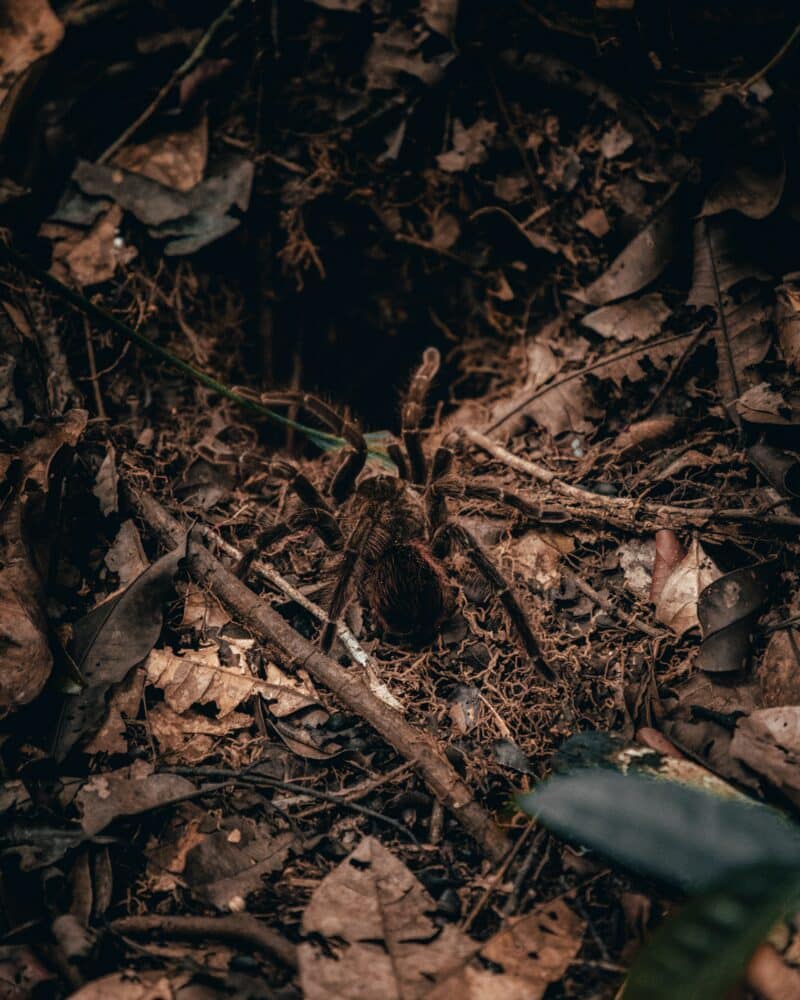
About
- Scientific name: Grammostola anthracina
- Phylum: Arthropoda
- Kingdom: Animalia
The commercialization of autochthonous examples isn’t disallowed in many nations where they reside, since their number, similar to that of most “top” hunters, isn’t enormous, and gathering them from the field influences the biology of the related climate. They are additionally not effectively accessible in that frame of mind, to the way that their generation in bondage is complex.
Assuming you have two or three conceptive ages, you need to beat the hindrance that when the youth are conceived, a haze of tiny bugs will more likely than not bounce any security obstruction, for example, the breathing openings in terrariums.
One more detail to consider is that a savage animal category chases its prey in huge regions encompassing its home; no homegrown terrarium will have adequate circumstances for its regular and solid turn of events. Thinking of it as a domesticable animal category ought to stay away from. It tends to be forceful, and its hairs are stinging.
Read on for more info on the top 10 most enormous spiders in the world
Where can one find Grammostola anthracite?
It is found in Uruguay.
#6 Chaco Golden-knee
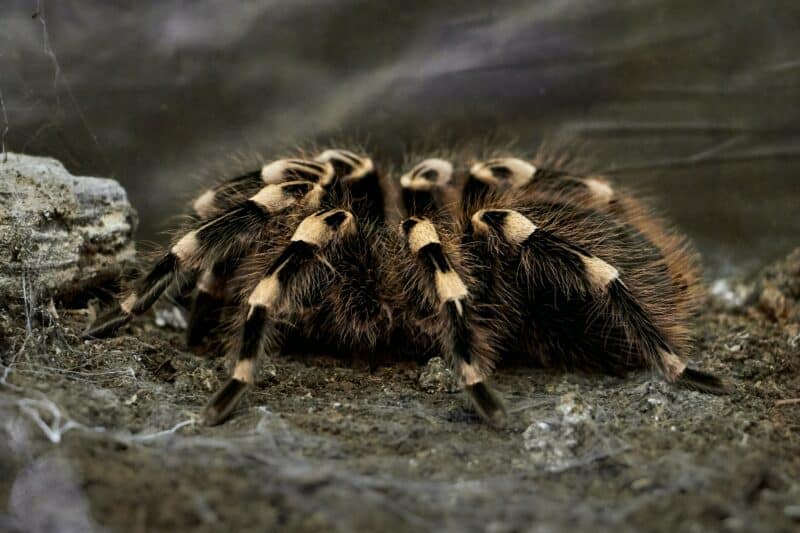
About
- Species: G. pulchripes
- Class: Arachnida
- Order: Araneae
- Phylum: Arthropoda
- Family: Theraphosidae
- Genus: Grammostola
- Kingdom: Animalia
Tarantulas don’t require tremendous tanks, yet Chaco brilliant knees are huge examples, so you’ll require a territory with a limit of no less than 15 gallons. They’ll have a good sense of reassurance with a sanctuary, like an enormous piece of bark or a plastic cabin.
Give a thick layer, something like 6 inches, of a protected substrate, for example, coconut fiber or synthetic-free preparing manure, and a shallow water dish. Keep the tank in a warm room and out of direct daylight; if the room’s not warm all year.
You might need to put resources into supplemental intensity – – yet this animal needn’t bother with a hot living space that would require an intensity source, by and large. Like different tarantulas, the Chaco brilliant knee stays alive on a tight eating routine of more modest spineless creatures, generally arthropods, in nature.
Feed your hostage tarantula crickets, cockroaches, grasshoppers and comparable nontoxic bugs. She likely will not eat that frequently, about a few times per week. Eliminate any bug parts a short time later.
If she hasn’t eaten a prey thing following a couple of hours, she’s not eager. Eliminate it from the tank and feed her again following a day or somewhere in the vicinity – – except if she begins to shed, in which case don’t take care of her anything until the cycle is finished.
Read on for more info on the top 10 most enormous spiders in the world
Where can one find Chaco golden knee?
Argentina and Paraguay’s grasslands are known to be home to the Chaco golden knee tarantula. They are therefore adapted to a climate that is usually warm and alternates between dry and rainy seasons.
#7 Colombian Giant Tarantula
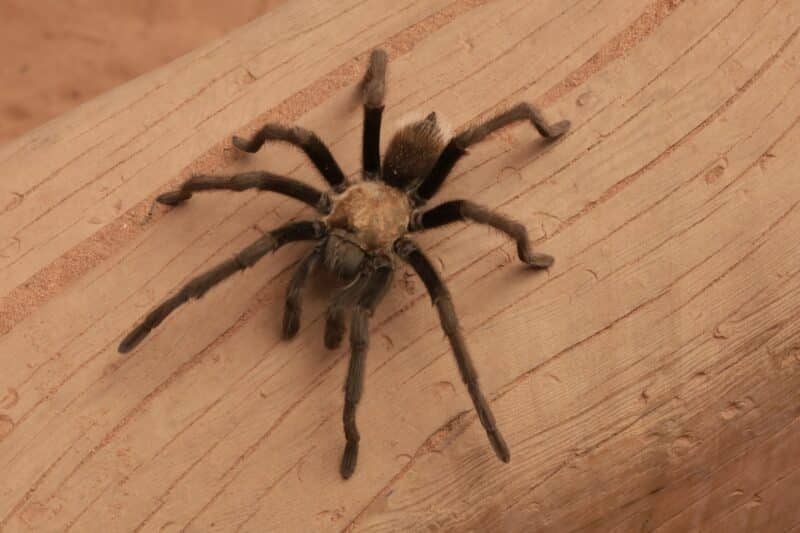
About
- Scientific name: Megaphobema robustum
- Kingdom: Animalia
- Phylum: Arthropoda
- Class: Arachnida
- Order: Araneae
The Columbian red-legged tarantula is known to be a sketchy animal group and will endeavor to escape or protect itself by barrage (stripping the stinging hairs and hurling them towards a hunter) even within sight of minor unsettling influences.
Furthermore, it has another protection system that is very exceptional to tarantulas. The Colombian red-legged tarantula doesn’t show the ordinary undermining token of this subfamily, in which the bug ascends and raises the pedipalps (changed limits in the head region) and the main sets of legs in the event of an experience with potential hunters (hunters).
All things being equal, the fourth set of legs is pointed and permits the insect to safeguard itself with compelling kicks with these legs. To do this, it goes all over and afterward jerkily expands its legs toward an aggressor. On the off chance that the danger endures, the bug turns in a circle to confound the hunter, which is built up significantly by the shading of its legs.
Read on for more info on the top 10 most enormous spiders in the world
Where can one find Colombian Giant Tarantula?
The Colombian gigantic tarantula, also known as the Colombian giant redleg or Megaphobema robustum, was first reported by Anton Ausserer in 1875 and can reach 6 to 8 inches. It can be found near logs in the tropical rainforests of Brazil and Colombia. It eats mice, small lizards, crickets, and other large insects.
#8 Camel Spider

About
- Scientific name: Solifugae
- Order: Solifugae
- Phylum: Arthropoda
- Kingdom: Animalia
Camel bugs are not lethal to people yet they are awful hunters that can visit demise upon bugs, rodents, reptiles, and little birds. These solid desert tenants gloat enormous, strong jaws, which can ultimately depend on 33% of their body length.
They use them to hold onto their casualties and go them to mash with a cleaving or cutting movement. Camel bugs are not venomous, yet they in all actuality, do use stomach-related liquids to condense their casualties’ tissue, making it simple to suck the remaining parts into their stomachs. A camel bug is tan and dull brown in variety, with little hairs on its body.
The fine hairs on the body of a camel bug help to protect it from the desert heat. The hue of a camel insect assists it with mixing into the dry, hot climate around them. This can assist it in avoiding hunters. While it has eight legs, specific individuals erroneously think it has ten since camel insects have two long pedipalps close to their mouths. They utilize these to find and pull in their prey.
The size of this bug goes from 3 to 6 inches long. It weighs around two ounces. If you put three golf tees on the ground start to finish you would be checking out at the length of a six-inch camel bug.
Grasp a tennis ball and you are holding something about a similar load as a two-ounce camel insect. The camel bug is quite possibly of the most significant bug on the planet. Camel bugs can rush through their desert or scrubland living space.
The quickest they can go is 10 mph – which, while not sluggish, is something like one fifth as quick as a bunny. The following time you jump in the vehicle, watch the speedometer as it climbs to 10 mph, this will provide you with a strong thought of how quick this creature moves!
The fine hairs on the body of a camel bug help to protect it from the desert heat. The hue of a camel insect assists it with mixing into the dry, hot climate around them. This can assist it with avoiding hunters. While it has eight legs, specific individuals erroneously think it has ten since camel insects have two long pedipalps close to their mouths. They utilize these to find and pull in their prey.
Read on for more info on top 10 biggest spiders in the world
Where can one find Camel Spider?
Solifugids, often known as camel spiders, are a mysterious order of arachnids that are indigenous to deserts all over the world.
#9 Brazilian Wandering Spider

About
- Scientific name: Phoneutria
- Family: Ctenidae
- Order: Araneae
- Kingdom: Animalia
The Brazilian meandering insect can develop to have a leg length of up to 4 – 5 inches. They are enormous bushy spindly-looking bugs with eight eyes, two of which are huge. Brazilian meandering bugs are quick insects, their legs are solid and prickly and they have particular red jaws, which they show when infuriated. The Brazilian meandering insect isn’t a Tarantula. Brazilian meandering bugs are not even in a similar family bunch.
Tarantulas are innocuous to people and are generally trap executioners who trust that prey will come to them. Brazilian meandering bugs are dynamic trackers. Brazilian meandering bugs and Tarantulas do share one thing, practically speaking, be that as it may, they don’t eat bananas.
Read on for more info on top 10 biggest spiders in the world
Where can one find Brazilian Wandering Spider?
There are nine different types of nocturnal wandering spiders in Brazil, and they all live there. Some species are also found in South and Central America, from Argentina to Costa Rica.
#10 Cerbalus Aravaensis

About
- Higher classification: Cerbalus
- Scientific name: Cerbalus aravaensis
- Rank: Species
- Family: Sparassidae
The Cerbalus aravaensis is a very uncommon types of huntsmen bug tracked down just in the Arava Valley of Israel and Jordan.
They are nighttime sand occupants who make their homes in sand rises and the sand around salt bogs, building their nook with a pivoted cover made of sand and paste to camouflage the entry from hunters. This bug is the most jeopardized species on this rundown as its restricted territory is in impending peril of annihilation from farming and sand quarries.
Where can one find Cerbalus aravaensis?
It is found in southern Arava Valley of Israel and Jordan.
Read on for more info on top 10 biggest spiders in the world
Summary on the Top 10 Biggest Spiders in the World
According to academics, spiders have existed for 350 million years, and without insects to keep pests that eat crops in check, mankind would face famine.
We hope you enjoyed reading this article! Also have a look at the top 10 most deadliest spiders in the world next!
- Wildlife of Sweden - April 19, 2024
- The 4 Best Places to See Jaguars - April 19, 2024
- Where to see the Big 5 of India - April 18, 2024

